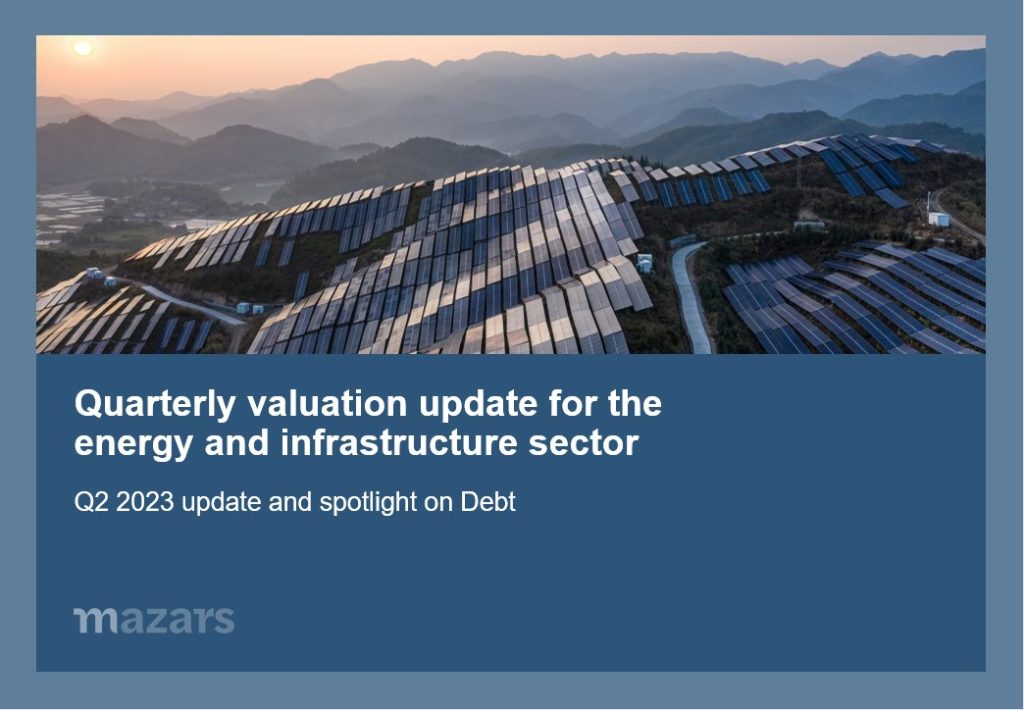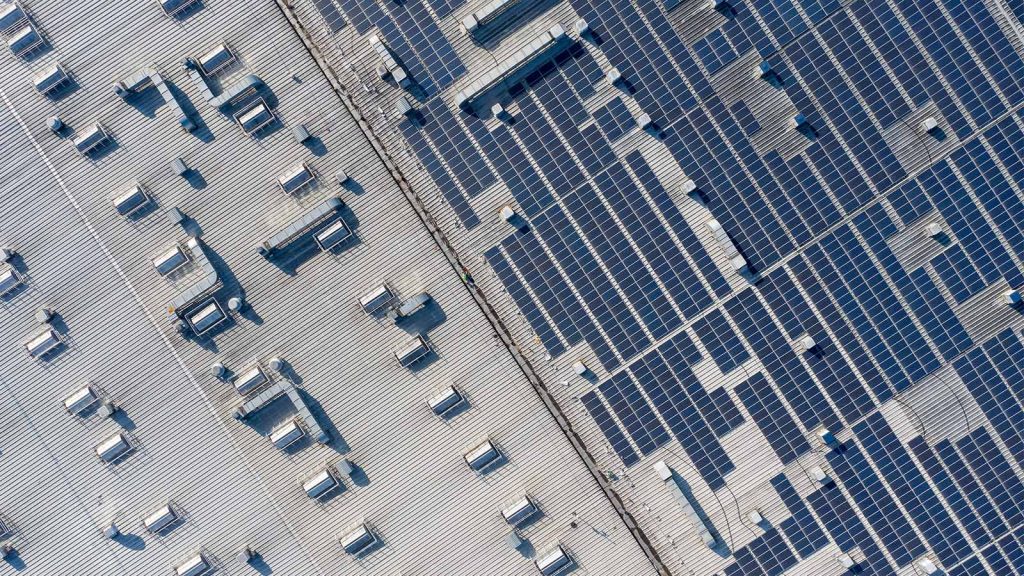
Q2 2023 quarterly valuation update for the energy and infrastructure sector | spotlight: impact of debt
Q2 2023 quarterly valuation update for the energy and infrastructure sector | spotlight: impact of debt
Discover the latest valuation trends in the energy and infrastructure sector, with a spotlight on how debt impacts equity valuations. While traditional valuation theory links higher debt to increased risk and a higher cost of equity, infrastructure valuations require a more nuanced approach. Our Q2 2023 update provides a snapshot of key publicly available valuation trends, covering both debt and equity metrics.
This quarter we continue to look at trends in debt and equity metrics relying primarily on publicly available information. In relation to the equity trends, we use the Mazars indices of listed infrastructure funds and listed renewable energy funds, compiled on the basis set out in Appendix 1 to this update.
Three key themes from Q2 2023:
The cost of debt has settled in a new range, and asset owners are having to adapt to this. Long-dated gilt yields indicated a relatively stable trend over the past quarter, which therefore crystallises the rising yields experienced in H2 2022. Private debt transactions are still taking place, but asset owners are having to accept the higher cost.
This is starting to feed into the cost of equity despite continuing high competition for assets. Strong competition for energy and infrastructure assets has limited the extent of increases on asset discount rates to date. But the capital markets are expecting more to come and transactional trends are starting to bear this out.
When analysing the impact of debt on equity valuations, a nuanced approach is essential. The introduction of debt is likely to increase risks to equity investors and therefore the required equity discount rates. But these risks need to be analysed as part of a broader market benchmarking exercise.
Download our quarterly valuation update for Q2 2023:

To see the previous valuation update, go here.














